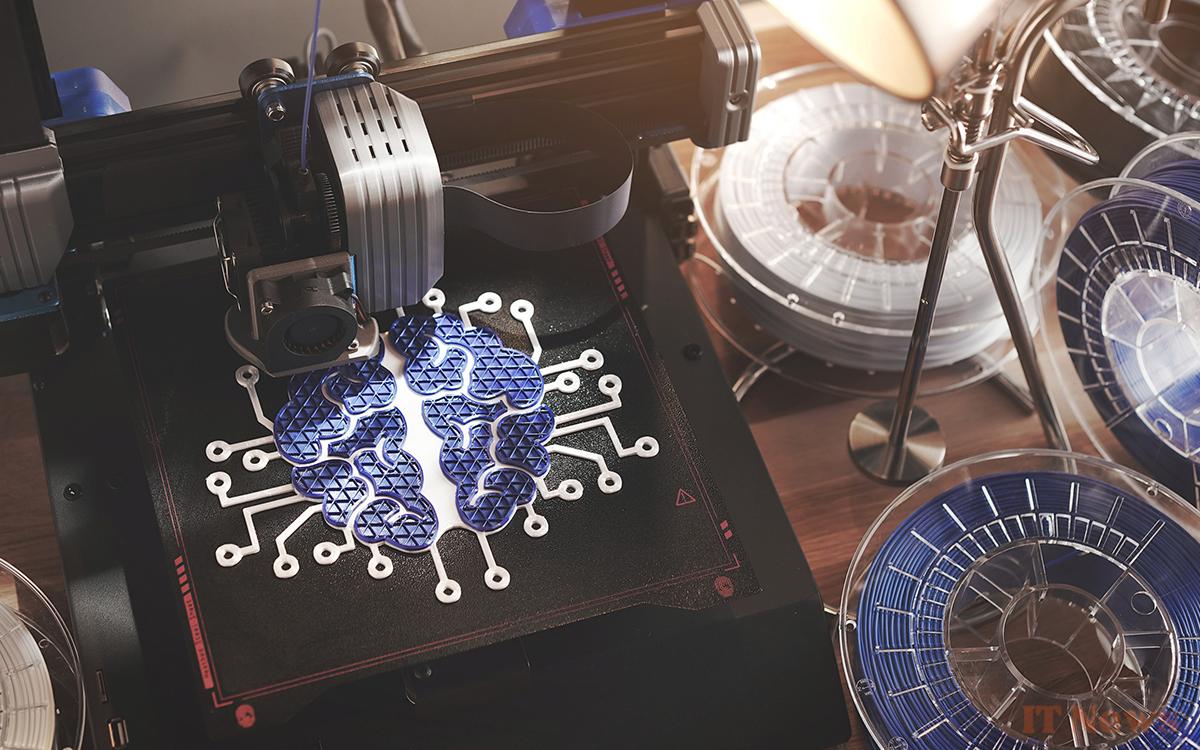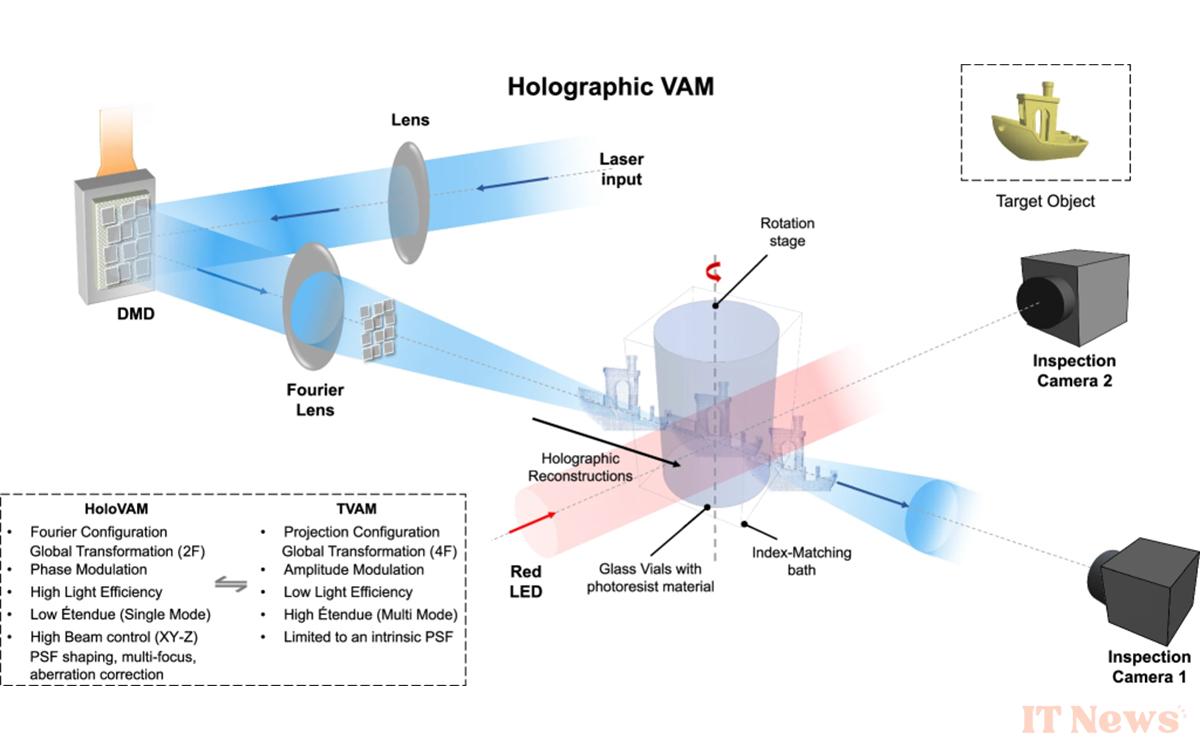Researchers have managed to significantly speed up 3D printing by projecting holograms onto resin. The technique allows you to create objects in the micrometer range with a very detailed result.
Do you know the principle of 3D printing? This involves creating an object by superimposing layers of resin, knowing that the time required for the operation depends on both the size of the project and the quality of the printer.
It is possible to speed up the process by using what is called TVAM, for Tomographic Volumetric Additive Manufacturing. This consists of printing an object in one go by projecting rays of light onto liquid resin. It solidifies where the light intensity is strong enough.
Impressive on paper, this way of doing things is generally inefficient, since Only 1% of the emitted light reaches the resin. Researchers therefore wanted to improve the system, and they achieved this by projecting not rays as such, but a 3D hologram of the desired result.
This technique projects holograms onto resin for rapid 3D printing
The basic principle is to divide the hologram into several boxes, which are themselves projected onto the resin. In order to avoid interference as much as possible, which requires the shortest possible projection times, the system called HoloTile sends up to 22,000 holograms per second. No printing in layers from top to bottom in the end, but via a container that rotates on itself, as you can see in the explanatory diagram below.
The results are there : compared to TVAM, the hologram system is approximately 30% more efficient. And above all, it can print objects in less than a minute with extreme precision. For example, the teams obtained a hollow cylinder of 720 micrometers (0.72 mm) in 37 seconds.
They believe that this will allow significant advances in the field of bioprinting in particular. Being able to print organs, human tissues, blood vessels or even bones quickly while reducing the risk of defects as much as possible is indeed one of the objectives to reach in this sector.
Source: Nature





0 Comments